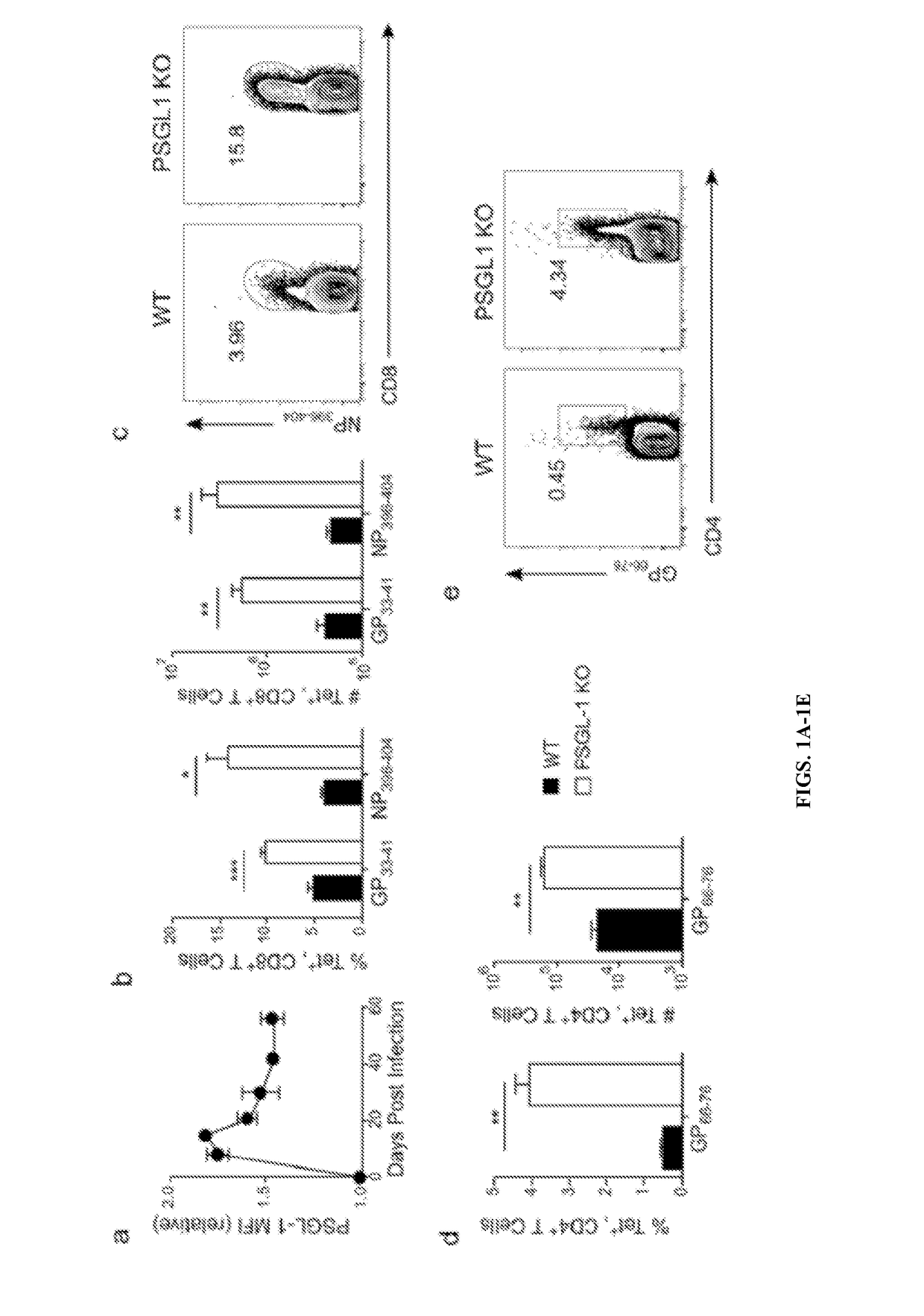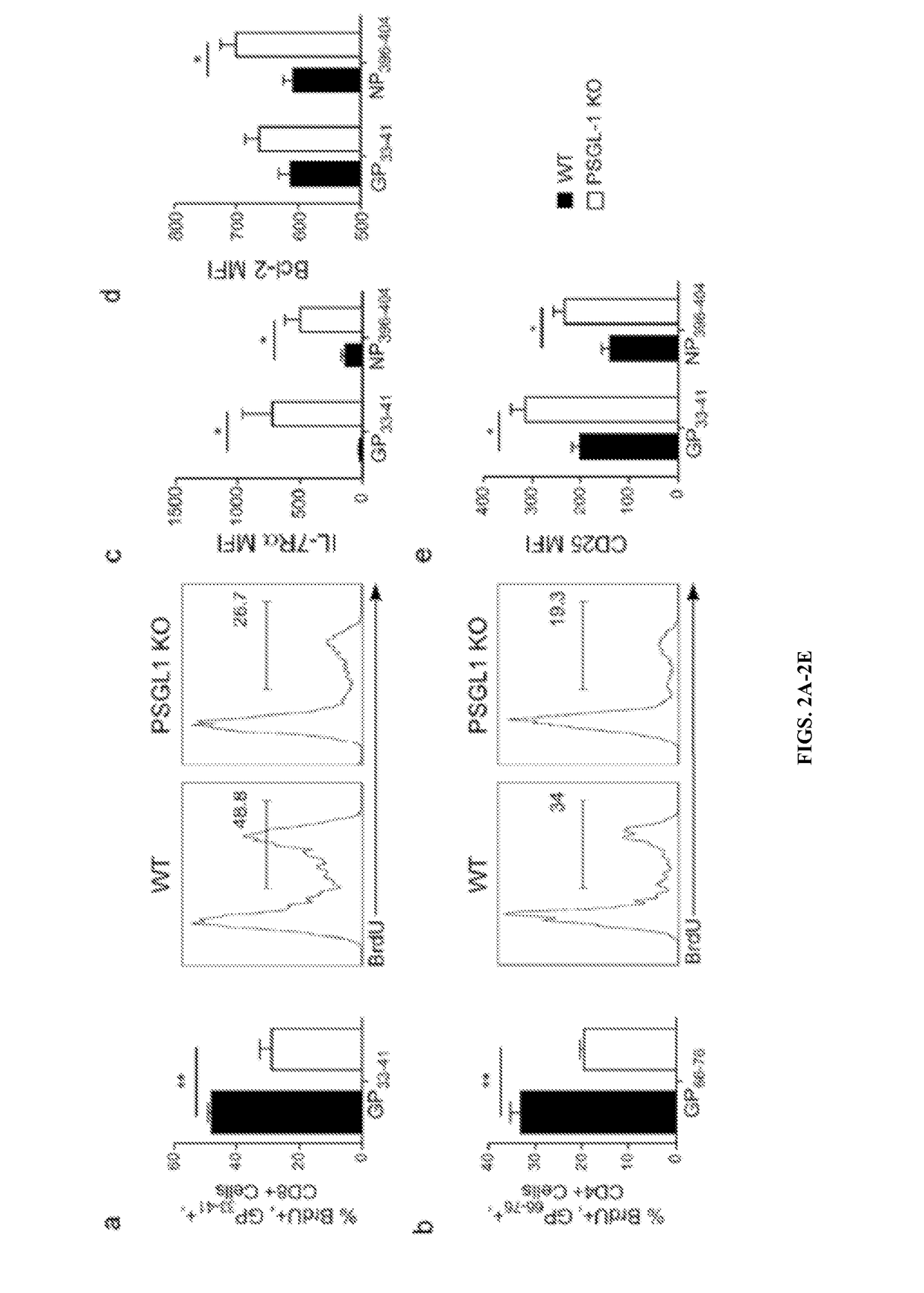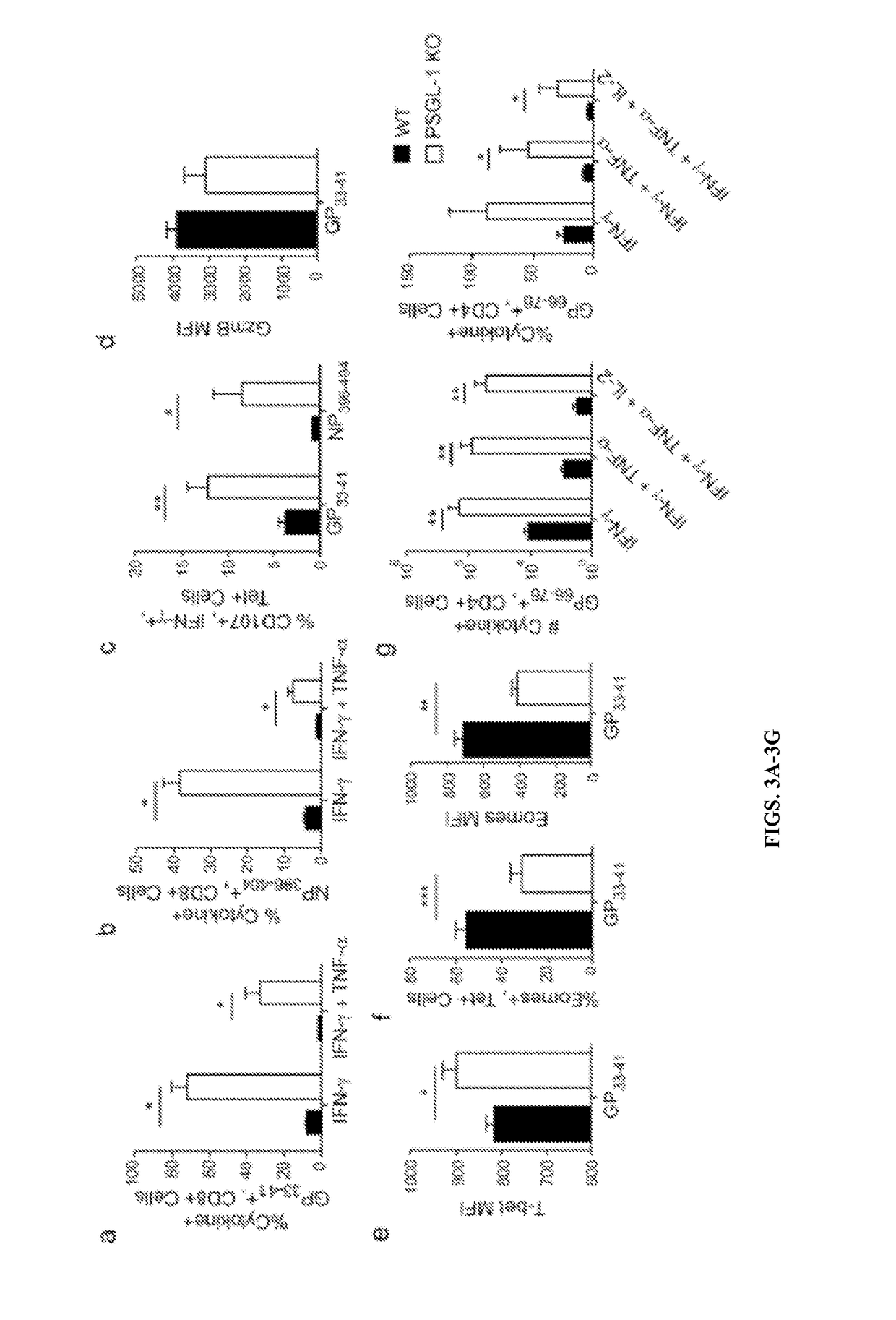Psgl-1 modulators and uses thereof
a technology of pselectin glycoprotein and modulator, which is applied in the field of antibodies, can solve problems such as chronic infections that become dysfunctional, and achieve the effect of increasing the survival rate of multifunctional t cells
- Summary
- Abstract
- Description
- Claims
- Application Information
AI Technical Summary
Benefits of technology
Problems solved by technology
Method used
Image
Examples
example 1
PSGL-1 Expression is Increased on Virus-Specific CD8+ T Cells and PSGL-1 Deficient Mice have an Accumulation of Virus-Specific T Cells During Cl13 Infection
[0090]To study PSGL-1 in chronic viral infection, the LCMV Cl13 virus was used which results in viremia to 90-dpi and detectable virus in brain and kidney to 200-days post infection (dpi). PSGL-I levels on CD8+ T cells specific for the GP33-41+ LCMV epitope was first examined by tetramer staining. Although. PSGL-1 is expressed by all T cells, the levels were increased on virus-specific compared to naïve CD8+ T cells (FIG. 1a). To examine contributions of PSGL-1 to the anti-viral response, WT or PSGL-1-deficient mice were infected with Cl13 and analyzed CD8+ T cells specific for the LCMV GP33-41+ and NP396-404+ epitopes. PSGL-1-deficient mice had greatly increased frequencies and numbers of GP33-41+CD8+ T cells at 8-dpi (FIG. 1b). The difference in CD8+ T cell accumulation was not observed until after 4-dpi (FIG. 8a-b) and tetrame...
example 2
PSGL-1-Deficient CD8+ T Cells have Enhanced Survival
[0092]Enhanced proliferation and / or survival could account for the accumulation of virus-specific T cells in PSGL-1-deficient mice. To assess proliferation, in vivo BrdU incorporation by virus-specific CD8+ T cells was analyzed at 8-dpi. BrdU labeled −50% of WT GP33-41+CD8+ T cells, but only −25% PSGL-1-deficient GP33-41+CD8+ T cells (FIG. 2a). Similarly, 2× more WT GP66-76 CD4+ T cells incorporated BrdU than PSGL-1-deficient CD4+ virus-specific cells (FIG. 2b). Since division did not seem to account for greater numbers of PSGL-1-deficient CD8+ T cells, the expression levels of the survival molecules, IL-7Rα and its downstream signaling target Bcl-2 by CD8+ effector cells was examined. At 10-dpi both GP33-41+ and NP396-404+ T cells from PSGL-1-deficient mice displayed increased levels of IL-7Rα (FIG. 2c) and Bcl-2 (FIG. 2d) compared to WT cells. Furthermore, IL-7Rα levels on PSGL-1-deficient virus-specific CD8+ T cells were higher ...
example 3
Virus-Specific CD4+ and CD8+ T Cells in PSGL-1-Deficient Mice are Multifunctional Effectors
[0093]Since chronic virus infection in WT mice leads to sequential loss of the CD8+ T cell capacity to produce IFN-γ, TNF-α, and IL-2, as well as to produce more than one of these cytokines simultaneously, cytokine production was examined. Much higher frequencies of PSGL-1-deficient GP33-41+ T cells secreting IFNγ and IFN-γ+TNF-α together were found compared to WT cells (FIG. 3a). NP396-404+ T cell responses were also functional (FIG. 3b). On a per cell basis, −10% of GP33-41+ T cells produced IFN-γ in WT vs −70% in PSGL-1-deficient mice (FIG. 3a). Furthermore, virus-specific PSGL-1-deficient CD8+ T cells produced significantly higher levels of cytokines (FIG. 11a,b). Both GP33-41+ and NP396-404+ PSGL-1-deficient CD8+ T cells had enhanced CD107a levels, indicating better cytotoxic degranulation, together with IFN-γ section (FIG. 3c), although WT and PSGL-1-deficient GP33-41+CD8+ T cells did no...
PUM
| Property | Measurement | Unit |
|---|---|---|
| size | aaaaa | aaaaa |
| molecular weight | aaaaa | aaaaa |
| temperature | aaaaa | aaaaa |
Abstract
Description
Claims
Application Information
 Login to View More
Login to View More - R&D
- Intellectual Property
- Life Sciences
- Materials
- Tech Scout
- Unparalleled Data Quality
- Higher Quality Content
- 60% Fewer Hallucinations
Browse by: Latest US Patents, China's latest patents, Technical Efficacy Thesaurus, Application Domain, Technology Topic, Popular Technical Reports.
© 2025 PatSnap. All rights reserved.Legal|Privacy policy|Modern Slavery Act Transparency Statement|Sitemap|About US| Contact US: help@patsnap.com



